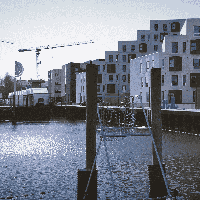Self-organizing society
Before and during the 1930s, when many Europeans fell for authoritarianism, farmers and workers in the Nordic countries self-organized and shaped society through their own actions. As Europe sank into darkness, self-organization kept the democratic spirit alive in the Nordics. We call that the Nordic Secret 2.0.
Self-organization has a much longer tradition in the Nordics, though, and this workshop series will introduce you to five areas of economic and societal self-organization: loan associations, health insurance societies, cooperatives, coordination between unions and employers, and affordable housing.
Nordic Secret 2.0 takes you through 5 sessions of 2½ hours each. There is 30 minutes of preparation before each session, and the sessions are a combination of presentations, discussions, and group exercises.
This series will mainly focus on Denmark, it is a bit technical, but it will be accessible to any dedicated social activist or policy maker.

Nordic Secret 2.0 online; all sessions are 19:00-21:30 CET
Hosts & teachers

Lene Rachel Andersen, author of The Nordic Secret

Kim Hjerrild, MA Political Science, board member Nordic Bildung
Spring 2025 price: €149
If you’re not in Europe, Canada, or the US, please contact us for a lower price
- Session 1: February 25
- Session 2: March 4
- Session 3: March 11
- Session 4: March 18
- Session 5: March 25
Session 1: Loan associations for housing

In 1795, much of Copenhagen burned down and people needed a way to finance new homes. By 1797, some clever Danes came up with a concept for collectively financing with mutural ownership of the debt and the property: the loan association.
The system is still in place and keeps the interest rate on mortgages below market average, allows 30-year amortisation, and affordable ownership.
You will get:
One of the core explanations why the Danish housing market is stable and homes are still affordable.
Session 2: Healt insurance societies

This model is not unique to Denmark, by no means! In fact, it used to be widespread across Europe and was the precursor for the welfare state public health care systems.
You will get:
An understanding of self-organized solidarity and the origins of one of the core elements of modern health care systems.
Session 3: Cooperatives

From dairies to cheese-factories and egg-shipping associations, slaughtering-plants, banks, stores, insurance societies and much more, the cooperative has shaped some of the most successful societies—and we never hear about this part of history. Neither in history classes, nor studying economics.
This session will explain the cooperative model, how it works, and its strengths and weaknesses.
You will get:
The knowledge you need to start planning a copperative.
Session 4: The Nordic model

In 1899, Danish workers and employers agreed to disagree and to recognize the other party’s right to have their special interests: Employers recognized the workers’ rights to unionize and go on strike; the workers recognized the employers’ right to own the means of production and to lock-out the workers in case of a conflict. And they both agreed that constant strikes and lockouts were bad for everybody, and it would be wiser to reach agreements on wages without involving the government.
They invented the Tripartite Negotiations, or The Danish Model, which was soon copied in Norway, Sweden, and Finland and became The Nordic Model.
You will get:
An understanding of the Danish flexicurity model and why Denmark has livable wages while there is no official minimum wage.
Session 5: Affordable housing

Photo: https://bl.dk/viden-kartotek/pressefotos/ Boligselskabernes Landsforening / Danmarks Almene Boliger
25% of Danes live in ‘affordable housing,’ which means rental apartments or rowhouses that are state funded, built by certified housing companies, and with tennant democracy.
The affordable housing sector keeps the government in the rental apartment “market” for the financing of affordable housing but not as a rent regulator or landlord; it keeps the standard of apartments up and the prices down by building not-for-profit.
Social wellfare rent subsidies for the individual tennant is the same for private and affordable housing.
You will get:
An understanding of how to collectively provide an alternative to the for-profit housing solutions without the government being the landlord.

